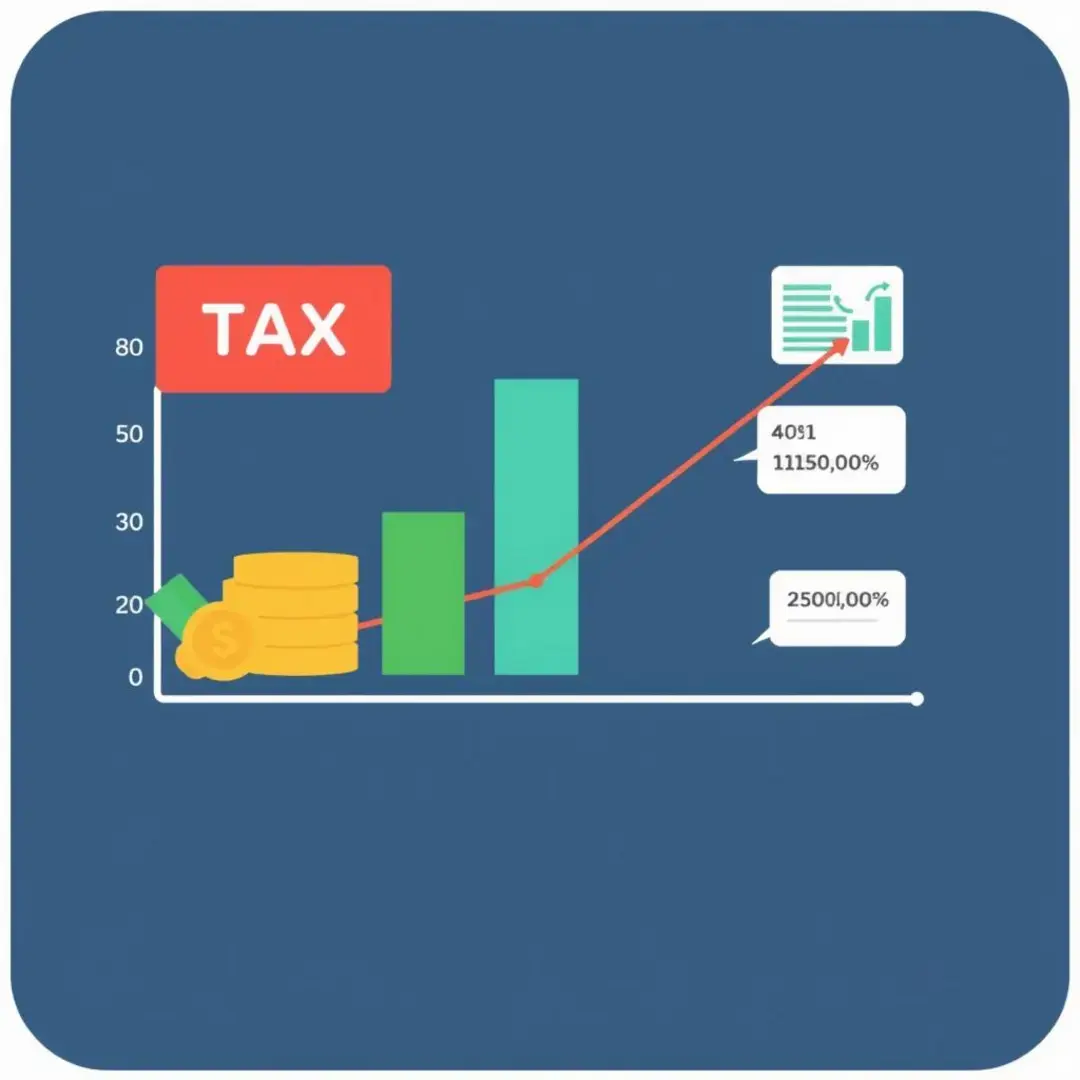Accelerated Depreciation: Tax Benefits for Assets
Understanding Accelerated Depreciation

What is accelerated depreciation?
Accelerated depreciation is an accounting method that allows for the larger depreciation deductions during the early years of an asset’s useful life. This approach stands in stark contrast to the straight-line method, where depreciation expense is spread evenly across an asset’s lifespan. By employing accelerated depreciation, businesses recognize the faster financial consumption of the asset, reflecting its more significant initial wear and tear.
The straight-line method allocates the same amount of depreciation expense each year, making it simple but possibly less realistic. Accelerated methods, such as the double declining balance, provide more substantial deductions upfront, resulting in lower taxable income in the initial years. Hence, choosing the right depreciation method significantly impacts financial reporting and tax liability.
Why use accelerated depreciation?
One of the primary reasons businesses opt for accelerated depreciation is to maximize tax deductions during the asset’s early years. As new businesses often face significant startup expenses, higher upfront deductions can ease tax burdens and improve cash flow. This immediate tax relief can prove invaluable for startups trying to establish themselves in competitive markets.
Increased cash flow resulting from accelerated depreciation can be strategically reinvested into the business, fueling growth initiatives or expanding operations. With more cash at hand, businesses can invest in new projects, hire additional staff, or upgrade technology. Therefore, this tax strategy not only minimizes liabilities but also fosters long-term sustainability.
Types of accelerated depreciation methods
The double-declining balance method is one of the most utilized accelerated depreciation techniques. It doubles the rate of straight-line depreciation, allowing for large deductions in the earlier years of the asset’s life. This method is particularly effective for assets that lose value quickly, such as technology and machinery.
Another option is the sum-of-the-years’ digits method, which accelerates depreciation by applying a fraction based on the sum of the years of the asset’s useful life. This method results in steeper deductions in the earlier years and is suitable for claimants looking for flexibility and efficiency in their tax approach.
The Section 179 deduction is a significant benefit that allows businesses to immediately write off the full purchase price of qualifying equipment and software. This provision encourages small businesses to invest in themselves rather than allowing equipment to depreciate over time. As such, Section 179 can significantly reduce tax payments and improve cash flow.
Bonus depreciation enables businesses to deduct a large percentage of the asset’s cost in the year it is placed in service. This approach can often be combined with Section 179, maximizing tax benefits in the short term. Staying updated on legislation regarding bonus depreciation is vital as rules can evolve year by year.
Applying Accelerated Depreciation

Eligibility criteria for accelerated depreciation
To benefit from accelerated depreciation, certain eligibility criteria must be met. Specifically, qualified property generally includes tangible assets such as machinery, buildings, and equipment that contribute to business operations. Additionally, the asset should be used more than 50% for business purposes to qualify for accelerated depreciation methods.
Another critical factor in applying accelerated depreciation is the placed-in-service date. Assets must be in service to start claiming depreciation; thus, knowing when assets will be utilized effectively is essential. Different conventions exist, impacting the calculation of depreciation, such as half-year or mid-quarter conventions, which can alter the write-offs significantly.
Calculating accelerated depreciation
Calculating accelerated depreciation involves utilizing specific formulas for each method. For instance, in the double-declining balance method, the formula involves multiplying the book value of the asset by double the straight-line depreciation rate. Clear examples illustrating these calculations can provide valuable insights into determining tax benefits accurately.
Various software solutions are available to simplify depreciation calculations, ensuring compliance with tax laws. These tools can automate tracking, reporting, and adjustments as asset values decrease over time. Utilizing such technology becomes crucial for businesses aiming to minimize errors and enhance accuracy in their financial reports.
Impact on financial statements
Accelerated depreciation has notable effects on a company’s financial statements. By reducing net income temporarily through higher deductions, businesses effectively lower their tax liability. However, this impact should be thoroughly understood as it may result in fluctuating income levels that need careful management within investor relationships.
When disposing of an asset, it’s vital to consider the implications of accelerated depreciation on your overall tax obligation. Businesses may encounter depreciation recapture, meaning they might pay taxes on the gains from selling an asset that had its depreciation accelerated. Strategically addressing this provides opportunities to mitigate potential negative financial impacts.
Advanced Strategies and Considerations

Comparing depreciation methods
When evaluating depreciation methods, companies should analyze which option aligns optimally with their asset usage and financial strategy. Factors such as the anticipated life span of assets, potential drawdowns on cash flow, and tax implications play crucial roles in this decision-making process. Conducting a comprehensive review ensures informed choices that benefit the organization’s long-term financial health.
The choice of depreciation method can produce vastly different long-term tax obligations. While accelerated methods might present short-term advantages, it’s necessary to assess how these choices affect future financial periods. Sound tax planning anticipates changes, allowing businesses to align their tax strategies effectively over the years.
Depreciation recapture
Depreciation recapture refers to the taxing of any gain from the sale of an asset that was previously depreciated. This concept is crucial for businesses employing accelerated depreciation methods, as it impacts potential returns on asset sales. Awareness and understanding of depreciation recapture rules help companies plan effectively for any tax liabilities arising from asset disposals.
Strategies exist that help minimize the effects of depreciation recapture, allowing businesses to maximize their asset value. For instance, retaining the asset longer before selling or reinvesting the gains in similar assets can defer tax liabilities. Integrating these strategies into overall tax planning is essential for long-term fiscal health.
Tax planning with accelerated depreciation
Incorporating accelerated depreciation into a comprehensive tax strategy enhances tax efficiency and overall financial performance. Businesses should engage in regular reviews of their tax plans, assessing how depreciation fits into their broader fiscal objectives. Such diligence helps ascertain optimal approaches to both current and future tax obligations.
Effective forecasting of future tax benefits relies on a nuanced understanding of how depreciation will impact overall financial performance. Companies must consider various scenarios, including changes in tax law and asset utilization rates, when projecting tax liabilities. Equipped with this knowledge, businesses can make strategic decisions that enhance profitability and sustainability.
Current Regulations and Updates

Recent changes in depreciation laws
The Tax Cuts and Jobs Act introduced significant changes concerning depreciation, especially regarding bonus depreciation. The act increased the percentage of bonus depreciation available for qualified expenses. Staying updated on such regulatory changes is essential for understanding how they affect both short-term and long-term tax positions.
Tax laws are dynamic, necessitating continual monitoring for additional legislative updates that could influence depreciation strategies. For example, maintaining awareness of local tax incentives for certain industries can provide opportunities for enhanced deductions. Being proactive in this area benefits businesses and shields them from unexpected tax ramifications.
Staying informed about depreciation regulations
The IRS provides a wealth of resources regarding depreciation regulations, offering guidance to help businesses comply. These publications can clarify how to apply various depreciation methods while assisting with intricate tax calculations. Regularly consulting these sources is crucial for tax professionals and businesses alike.
Given the complexity of tax laws and depreciation methods, consulting with tax professionals is often invaluable. These experts can provide tailored advice based on specific business circumstances, ensuring compliance while optimizing tax benefits. Forming solid relationships with knowledgeable tax advisors improves the overall financial strategy of any organization.












